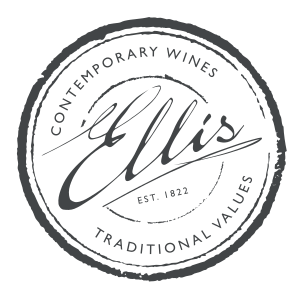Producer Spotlight: Strandveld Vineyards
Strandveld Vineyards and Biodiversity
Strandveld Vineyards is a beautiful, wind-swept winery located 9km from the sea. Situated between Elim and Cape Agulhas it is the southernmost winery on the continent of Africa.
“Strandveld” refers to the coastal belt of land which spans the coastline around Africa’s tempestuous southernmost tip at Cape Agulhas. Lying almost 35˚ south, the Cape South coast is characterised by severe wind, mist and cool temperatures. This confluence of maritime climate, varying sites and soil types creates the diversity of terroir that distinguishes the wines of Strandveld Vineyards.
“The decidedly cool Elim, near Cape Agulhas, is clearly capable of making notably fine Sauvignon Blancs.” Jancis Robinson MW
As well as an emerging and exciting wine growing region, the Agulhas Plain region of South Africa is also known for its incredible biodiversity. It’s considered a biodiversity hotspot, thanks to the lowland Fynbos vegetation that abounds here (including critically endangered plant species), and the animals they provide a home to.
In fact, of the 1850 species found here, at least 315 are species of special concern. The area is also known for its unique wetlands – all forming part of a series of water arteries that provide life to the communities and natural life here.
But there are major threats to the biodiversity of the region. These include too frequent fires, invasive plants and habitat transformation – threats that have consumed much of the private land. What’s more, traditional agricultural activities have also sometimes proven to be detrimental to the natural habitat and threatened fauna and flora. Pressure on farming operations, through rising input costs can force landowners to use more natural land, and agriculture cannot afford to stem the alien plant invasion and support land for conservation purposes only.
Due to the unique biodiversity, and the types of agriculture here (including viticulture), a special approach was required if the area was to be protected. So, wineries based here joined forces with other landowners in the area, and the community of Elim, to rethink the way conservation and agriculture can work together.
And so, the Nuwejaars Wetlands Special Management Area (NWSMA) was born.
The area consists of high potential agricultural land interspersed with wetlands and natural vegetation of immense value. The need was for a system that kept people on the land and maintained national food security while improving the area for all by developing an economy around the biodiversity that still exists and increasing work opportunities.
Today a total of 25 private landowners, including emergent farmers and local communities, work together to collectively manage the Nuwejaars Wetlands and surrounding landscapes for conservation. This resulted in the development and implementation of a large land scale conservation model, new to South Africa.
Management of the natural areas is done jointly in a strategic way. This allows the farmers to concentrate on food, flower and wine production while their natural areas are cared for, jobs are maintained and work created.
For Conrad Vlok of Strandveld Vineyards, farming sustainably makes perfect sense. “When natural landscapes function as they should, nature takes care of the land, including the agricultural land. It means more productive farms, and for us, wineries that produce world-class wines.”
The natural areas within the NWSMA are being restored and developed sustainably. The Nuwejaars team has also reintroduced suitable game – including hippo and buffalo, last seen on the Agulhas Plain around 200 years ago. These animals in turn create a biodiversity economy through tourism. The Nuwejaars members also actively rehabilitate the wetlands here, and undertake an active burning programme to both regenerate the fire dependent fynbos and form a mosaic of different aged vegetation to prevent fires.
The Nuwejaars Wetlands Special Management Area is promoting a model for private-community collaboration in establishing buffer zones around formally protected areas and extending biodiversity conservation into privately owned areas of ecological value.
The vision is to create a sustainable ecology, which ensures the protection of the Nuwejaars Wetland Ecosystem, enhances the heritage and culture of the sub-region, generates benefit for all stakeholders, helps meet social and environmental requirements, and encourages community lifestyles compatible with environmental sustainability.
Visit www.nuwejaars.com for more.
Our Product range from Strandveld Vineyards can be seen here.
